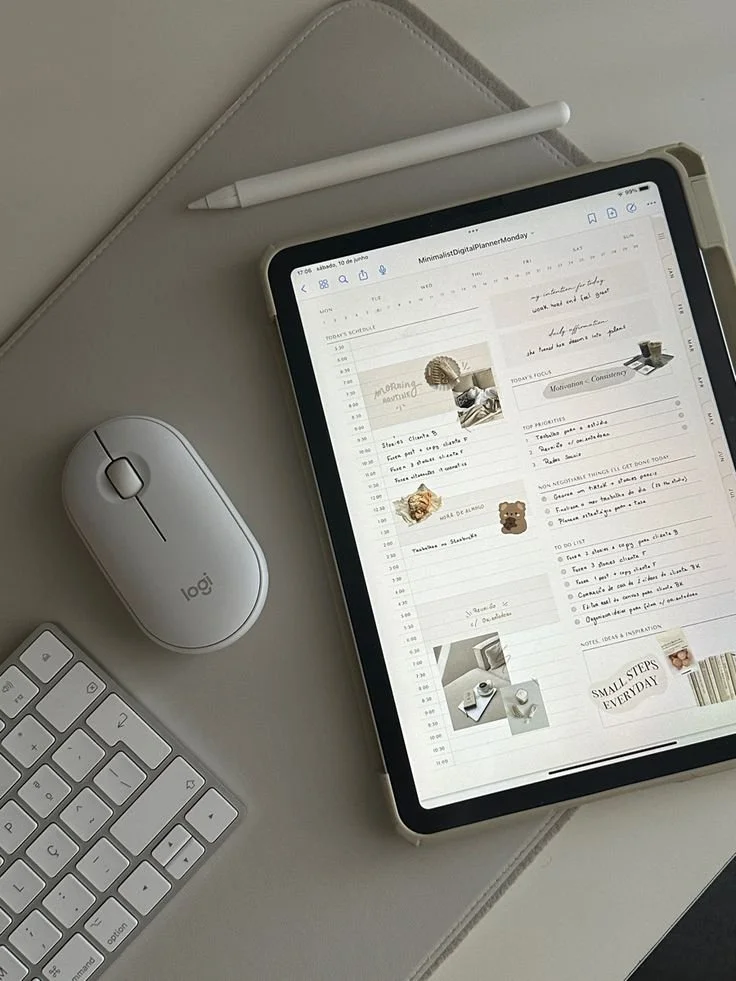Parents all over the world are on a constant lookout for creative approaches and interactive techniques to ignite the natural curiosity of their children. They strive to ensure that learning becomes an enjoyable adventure for kids, achieved through a blend of playful activities intertwined with educational content.
In this insightful article, we explore a variety of effective methods to introduce enriching opportunities for learning into the lives of children, nurturing their growth and development in meaningful ways.
No. 1
Creative Learning Techniques
Many students often find themselves facing challenges when it comes to discovering joy in studying, which can ultimately result in feelings of frustration and forgetfulness. However, what if we could transform the learning experience into a fun and engaging journey that ignites curiosity and enthusiasm within each student?
Here's where creative learning techniques come in:
Transform Learning: Creative techniques turn boring study sessions into engaging experiences.
Boost Retention: Research shows a link between creativity and academic performance, suggesting creative activities help retain information better.
Spark Curiosity: Educators use creative methods to stimulate young minds and keep them interested in learning.
Engage Imaginations: Techniques like mixing art with science or using gamified platforms can capture a child's imagination and lead to powerful learning.
Develop Critical Thinking: Creative learning fosters critical thinking skills while making learning enjoyable, promoting a lifelong love of learning.
Build Collaboration: Group projects and activities encourage teamwork and communication, fostering valuable social skills.
No. 2
Utilizing Technology
In today's digital age, the utilization of technology provides limitless opportunities for enriching children's educational experiences. By integrating digital tools and resources into learning environments, educators can create engaging and interactive lessons that cater to diverse learning styles and abilities. This approach not only boosts students' motivation and curiosity but also equips them with essential skills for success in the 21st century.
If educational apps, interactive e-books, and online learning platforms are integrated into their routines, parents can provide kids the chance to explore subjects dynamically. These tools cater to various learning styles and keep them enthralled, making learning fun for kids.
Technology, when consciously and intentionally incorporated, evolves into a valuable companion in fostering and enriching a child's abilities, understanding, and curiosity. By leveraging its capabilities in a thoughtful manner, we can witness a significant impact on a child's growth and development.
No. 3
Educational Apps and Games
Educational apps and games serve as a gateway to knowledge, turning conventional learning into an engaging and exciting journey. By catering to different learning styles, they ensure that each individual discovers something truly captivating. With interactive features incorporated, even intricate concepts become accessible and fun to understand, elevating the overall learning experience.
The accessibility of these apps enables consistent practice and learning outside the classroom. This seamless integration encourages kids to see education as a captivating part of their everyday lives, fostering an enduring love for knowledge.
Here are some engaging and beneficial educational resources that can enhance the learning experience:
Skillshare: Art and other genres for kids including origami, drawing, painting, and coding.
Khan Academy Kids: Comprehensive educational content for young learners.
ABCmouse.com: Engaging activities for foundational skills.
Prodigy Math Game: Interactive math practice in a fantasy game setting.
Duolingo: Language learning made fun and interactive.
Epic!: A digital library for kids with interactive reading.
ScratchJr: Introduction to coding for young children.
No. 4
Virtual Field Trips
Virtual field trips provide children with a one-of-a-kind chance to immerse themselves in exploring the diverse wonders of the world, all while remaining in the familiar settings of their home or classroom.
Here's a look at some fascinating virtual destinations:
Museums: Engage with exhibits from the Louvre or the Smithsonian Institution.
Zoos and Aquariums: Discover animal life with live cams from the San Diego Zoo or Georgia Aquarium.
Historical Sites: Take interactive tours of ancient wonders like the Pyramids of Giza or Pompeii.
Space Exploration: Experience the cosmos with NASA's virtual tours of the International Space Station.
No. 5
Online Math Tutoring Platforms
Choosing the right online math tutoring approach can significantly enhance a child's learning experience by making math both fun and effective. These platforms offer comprehensive tutorials with engaging lessons and practice exercises, providing a personalized learning experience.
Parents and educators can utilize these tools to support and supplement traditional classroom learning. Selecting an appropriate platform, like those offered by Mathnasium El Paso, ensures children develop strong math skills while enjoying the learning process.
No. 6
Hands-On Activities
Incorporating hands-on activities enhances children's learning experience. Through interactive projects like building models, kids can better grasp complex concepts by physically engaging with the materials.
Consider kids' activities in Sydney to make learning fun and interactive for kids. Every child can find something enjoyable to do while gaining knowledge through play. Arrange a day in Sydney's lively city that is full of enriching events that pique your curiosity and imagination.
Whether it's science, math, or history, hands-on activities (games, experiments) offer an enriching way to connect theoretical knowledge with real-world applications, encouraging curiosity and promoting deeper understanding.
Terms like “hands-on” and “experiential” learning are transformative in making the 'abstract' tangible.
No. 7
DIY Science Experiments
Parents, educators, and kids can dive into exciting experiments by gathering basic materials easily found around the house. Activities like these not only foster scientific thinking but also enhance problem-solving skills, creativity, and curiosity.
If their innate curiosity is encouraged, one unlocks a child’s potential to perceive learning as an enjoyable and ongoing adventure. Such experiential learning fosters a lifelong passion for knowledge.
Here are some fun experiments to try:
Making a homemade volcano with baking soda and vinegar.
Creating slime using glue, borax, and water.
Growing crystals from sugar or salt solutions.
Building a simple circuit with batteries, wires, and a light bulb.
Exploring density by layering different liquids in a jar.
No. 8
Building Projects
These projects introduce children to the basic principles of physics and architecture. By assembling various components, they uncover the intricacies of structure, balance, and design, all while solidifying their mathematical skills through measurement and geometry.
Encouraging U can significantly boost their self-confidence and teamwork abilities. Kids experience the gratification of seeing their ideas take tangible form, building patience and perseverance.
Here are some engaging building projects to try:
Constructing birdhouses
Assembling a butterfly shadow box
Building simple robots
Creating model bridges
Assembling mini greenhouses
Designing marble runs
No. 9
Custom Painting by Numbers
Custom painting by numbers ensures that children can explore their creative potential while learning new skills. These kits provide clear instructions, guiding children step-by-step through the artistic process.
With each brushstroke, children develop fine motor skills and hand-eye coordination. By using custom painting by numbers kits suited to their interests, they remain engaged and enthusiastic in their artistic journey.
In addition, the sense of accomplishment felt upon completing a painting fosters self-confidence and patience. This enjoyable and educational activity seamlessly merges art with essential life skills.
No. 10
Creating a Positive Learning Environment
Establishing a positive learning environment is crucial for children's development and success as it sets the foundation for their growth, nurtures their curiosity, and instills a sense of confidence in their abilities to overcome challenges and achieve their full potential. By creating a supportive and encouraging atmosphere, children are empowered to explore, learn, and thrive in a safe and inspiring space that celebrates their individuality and unique strengths.
Here's how you can create a space where children feel safe, valued, and motivated:
Safety and Value: Ensure children feel safe and valued to foster a space conducive to learning and exploration.
Intrinsic Interest: Create an atmosphere that naturally encourages a love for learning.
Vibrant Decorations: Use colorful charts, interactive calendars, and other educational aids to enhance retention.
Engaging Games and Activities: Design games and activities that promote participation and teamwork, stimulating both cognitive and social growth.
Empathetic Listening: Teachers and caregivers should listen to children’s concerns empathetically, making them feel understood and respected.
Boosting Confidence: Ensuring children feel understood and respected boosts their confidence and engagement.
Joyful Learning: Foster a love for learning by creating a joyful environment.
Positive Reinforcement: Use positive reinforcement to help children recognize their progress and increase their motivation to excel.
No. 11
Integrating Learning into Daily Life
Integrating learning into daily life is a powerful tool that offers continuous opportunities for growth. By infusing our days with this mindset, we can ensure that education remains vibrant, engaging, and, most importantly, fun. Embracing this approach grants each moment the potential to be a new opportunity for exploration and self-discovery.
Encourage children to assist with cooking, where they can not only apply math skills by measuring ingredients accurately but also delve into the realm of science by understanding the transformative process that food undergoes when exposed to heat during cooking. This hands-on experience will not only enhance their knowledge but also cultivate a lifelong love for learning in the kitchen.
Incorporating learning into daily activities, like gardening, transforms mundane chores into engaging lessons on biology and ecology. For example, children can measure plant growth, count fruits and vegetables, or even document observations in a journal.
Takeaways
Making learning fun for kids is an achievable goal that yields substantial benefits in their educational journey. By turning everyday moments into interactive learning opportunities, children can develop a deep, lasting appreciation for knowledge. The key lies in creativity, engagement, and positive reinforcement, allowing children to see tangible progress while fostering an intrinsic love for learning.
In essence, creating and maintaining an enjoyable learning environment for children is crucial. This nurturing atmosphere not only boosts their academic abilities but also fosters a lifelong passion for discovery and a deep thirst for understanding.
























































































































































































